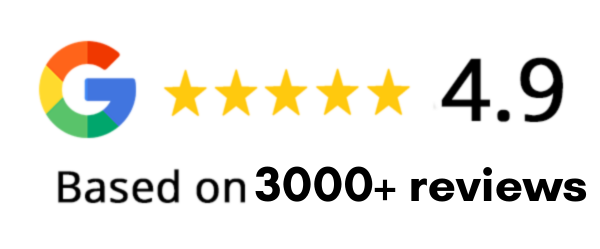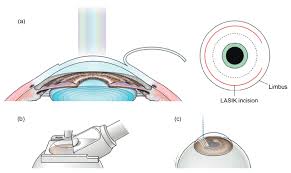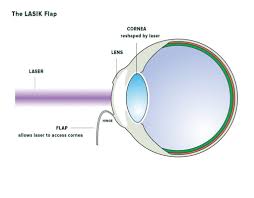Table of Contents
ToggleLASIK and Corneal Cross-Linking (CXL) serve different purposes and address distinct vision issues.
LASIK is designed to correct refractive errors like myopia, hyperopia, and astigmatism, while Cross-Linking is a treatment specifically for Keratoconus to stabilise the cornea.
Understanding the differences between these procedures can help you make an informed decision about which approach is suitable for your unique vision needs. Here’s everything you need to know.

What is LASIK?
LASIK (Laser-Assisted in Situ Keratomileusis) is a highly popular laser eye surgery that corrects common refractive errors such as nearsightedness, farsightedness, and astigmatism. By reshaping the cornea, LASIK improves how light is focused on the retina, offering sharper and clearer vision. Reinventing lives globally, LASIK is primarily suitable for individuals with stable vision and healthy corneas.
How does LASIK work?
The LASIK procedure involves three main steps:
- A surgeon creates a thin, hinged flap on the surface of the cornea, typically using a microkeratome blade or a femtosecond laser.
- An excimer laser precisely removes corneal tissue to reshape the curvature of the cornea, allowing it to focus light more accurately on the retina.
- The flap is then repositioned to assist natural healing, and no stitches are required.
Key Use: LASIK is most effective for individuals looking for a permanent solution to wearing glasses or contact lenses for refractive errors.
Benefits of LASIK
- Rapid Results: Most patients experience improved vision within 24-48 hours.
- Convenience: Reduced or eliminated dependency on corrective eyewear.
- Quick Recovery: Minimal downtime; most return to daily activities within a day or two.
- Customisation: LASIK can be personalised based on individual eye conditions.
Limitations of LASIK
While LASIK is a fantastic solution for many, it’s not suitable in cases where:
- The cornea is thin or irregular.
- The patient has unstable vision or progressive corneal disorders like Keratoconus.
- Severe dry eyes are present.
What is Corneal Cross-Linking (CXL)?
Corneal Cross-Linking (CXL) is a medical treatment specifically developed to stabilise the progression of Keratoconus and other ectatic corneal disorders. Keratoconus is a degenerative condition where the cornea thins out and bulges into a cone-like shape, resulting in distorted vision. Unlike LASIK, CXL does not correct vision but rather strengthens the cornea to prevent further deformation.
Types of Cross-Linking
- Epithelium-Off (Epi-Off): The top layer of the cornea is removed before applying riboflavin (vitamin B2) drops and UV light.
- Epithelium-On (Epi-On): The corneal epithelium remains intact, reducing discomfort and recovery time. However, this method may be less effective for certain patients.
How does Cross-Linking work?
The procedure involves:
- Application of riboflavin eye drops to the cornea over a 30-minute period.
- Exposure to ultraviolet (UV) light, which activates the riboflavin to create new collagen bonds, thereby stiffening and stabilising the cornea.
Key Use: CXL is aimed at halting the progression of Keratoconus rather than improving visual acuity directly.
Benefits of Cross-Linking
- Effective Stabilisation: Prevents keratoconus from worsening when performed early.
- Safety: A minimally invasive procedure performed under topical anaesthesia.
- Long-Term Impact: Offers lasting results in slowing down disease progression.
Limitations of Cross-Linking
- Not a Vision Correction Method: Cross-Linking does not cure Keratoconus or eliminate the need for glasses or contact lenses.
- Postoperative Discomfort: Patients may experience temporary pain, dryness, and light sensitivity following the procedure.
- Gradual Improvements: Visual clarity and stability improve slowly over months.
LASIK vs Cross-Linking at a Glance
To better understand the core differences and applications of these procedures, here’s a comparison:
| Feature | LASIK | Corneal Cross-Linking (CXL) |
| Purpose | Correct refractive errors like myopia, hyperopia, and astigmatism | Stabilise corneal thinning in Keratoconus |
| Who is it for? | Individuals with healthy, stable vision and no corneal irregularities | Individuals with progressive Keratoconus |
| Process | Reshapes the cornea using a laser | Strengthens the cornea through riboflavin drops and UV light |
| Effectiveness | Improves visual acuity permanently | Prevents further progression of corneal thinning |
| Recovery Time | 1-2 days for most patients | Several weeks; gradual improvement over months |
| Suitability | Not appropriate for thin or irregular corneas | Not a solution for significant vision correction |
| Associated Risks | Risk of dry eyes, glare, or halos post-surgery | Temporary pain, dryness, or sensitivity after the treatment |
| Cost | Generally higher due to its corrective focus | Relatively affordable, depending on the method employed |
Which Procedure is Right for You?
Choosing between LASIK and Cross-Linking largely depends on your diagnosis and vision goals. If you have stable vision and no signs of corneal irregularities, LASIK may be the solution to achieving clear, glasses-free vision. However, if you’re struggling with progressive Keratoconus, Cross-Linking can effectively halt the condition and protect your long-term eye health.
When to Consider LASIK?
- You want clear vision without glasses or contacts.
- You have no history of corneal diseases like Keratoconus.
- Your prescription has been stable for at least a year.
When to Choose Cross-Linking?
- You have been diagnosed with Keratoconus or corneal ectasia.
- Your cornea continues to thin or bulge.
- Preservation of current visual quality is your primary objective.
Consult an Eye Specialist
Before deciding on any procedure, it’s critical to consult a certified ophthalmologist. Only a thorough eye examination can determine which treatment is suitable for your specific condition. Independent expert advice ensures that your decision considers the risks, benefits, and long-term implications of both treatments.
Final Thoughts
LASIK and Corneal Cross-Linking are two groundbreaking yet fundamentally different procedures. They address distinct vision-related challenges, so choosing the right one involves understanding your unique needs. While LASIK can offer life-changing visual freedom, Cross-Linking provides an effective defence against the degeneration associated with Keratoconus.
If you’re still unsure about the best course of action, don’t hesitate to seek expert guidance. After all, your vision is worth it!













